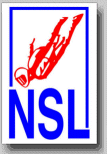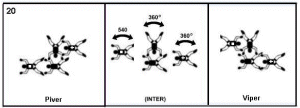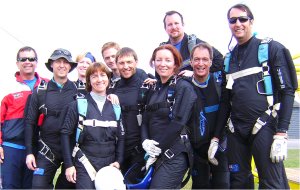
National
Skydiving
League
226 Pecan Street
Deland FL 32724
tel: (386) 801-0804
© 2003 - 2024
All Rights Reserved


226 Pecan Street
Deland FL 32724
tel: (386) 801-0804
© 2003 - 2024
All Rights Reserved


The NSL News already covered some of the more significant parts of the rules, which are not directly related to the actual dive pool (Freeze Frame - Slower Speed Judging - Event Duration), with a few stories after the World Meet. Fiona McEachern from Australia, the committee's chair, now reminded the Formation Skydiving community that it is also time to present proposals for changes of the actual dive pool to the committee.
The current concept of the dive pool, with a mixture of random formations and blocks for each sequence, was introduced after the World Meet 1983 in South Africa. It replaced the previous competition format with set block sequences or only random formations for each sequence. It turned out to be a perfect move by the IPC Committee at that time, which improved the system dramatically and has been successful and consistent ever since.

The IPC Committee wisely made these adjustments of the dive pool at the end of a 2-year cycle after a world meet. It gave the national teams enough time to learn the new and adjusted dive pool, which would be applied at the next world meet in two years.
There were more and regular changes in the earlier years of the new competition format with the dive pool of 16 Random Formations and 24 Blocks, as the application at the meets revealed its weaknesses. Eventually, the changes of the actual dive pool became smaller and smaller. The last dramatic adjustment was made at the beginning of the 2002 season when the number of blocks was reduced from 24 to 22. The NSL News brought these changes already to the international audience by then:

Random Formation 'Twins' was removed after a very short performance in the dive pool. It has been replaced by another Random Formation, the 'Open Accordian'. Block 1 (Snowflake - Snowflake), one of the older and popular block moves, disappeared completely from the dive pool to eliminate the Snowflake overlap between Blocks 1 and 23. The committee decided to keep the more challenging 'Snowflake - Offset', which made a big leap from 23 to 1. It needed to be relocated after the committee decided to reduce the number of blocks to 22.

Another new block made its way into the dive pool: 'Piver - Viper'. It replaces 'Open Stairstep - Compressed Stairstep' in slot 20. Open Stairstep - Compressed Stairstep had not caused any trouble regarding the overlap situation. It may have been just too similar to block 21. Piver - Viper appears to be a combination of the block techniques in Block 19 (Ritz - Icepick) and Block 22 (Tee - Chinese T)."

The 22 blocks and 16 random formations required only little attention since the two world meet years proved that the dive pool was getting closer to perfection. Only a few changes were made, which were all meant to make the job easier for the judges.
It was also the year when another significant rule change was introduced: the reduction of the penalty damage from two points to one point. This change was not directly related to the dive pool. However, it has had its own impact on Formation Skydiving competition, as well. The NSL News reported the dive pool changes for the 2005 season:

Side affect of the new block is the fact that the Bundy was now taken for the new block. The Bundy used to be Random Formation M of last year's dive pool. The committee had to pick a new random formation for M. It voted for the easiest solution. The Zipper and the Star became available, and the committee decided to keep the good old Star alive. The whole history of Formation Skydiving began with the Star. It is good for the tradition of the sport to see this veteran formation continue. M is now a 'Star'.
The committe also decided to remove the arrows and 180-degree of turn indication for Block 5 (Opal - Opal). The pieces are now allowed to rotate forward or backward, and they can choose the sheering or cogging technique. The centerpoint crossing of the vertical technique is not an issue any longer for the revised Block 5."

You would think that this is a great result after all these efforts. However, Fiona McEachern encouraged teams and competitors after the World Meet to provide suggestions of changes for the dive pool. She mentioned that it is about time for a few new moves after discussing it with some competitors in Maubeuge. It is her goal to "to keep the current mix of slot switchers and straight up jumps and not have anything that is a nightmare to judge."
IPC's FS Committee Chair recently sent a reminder of this upcoming topic. The question remains open whether it is helpful or counter-productive to change a dive pool that seems to work very well. The NSL News will follow up on the topic. Fiona McEachern can be reached directly by e-mail.